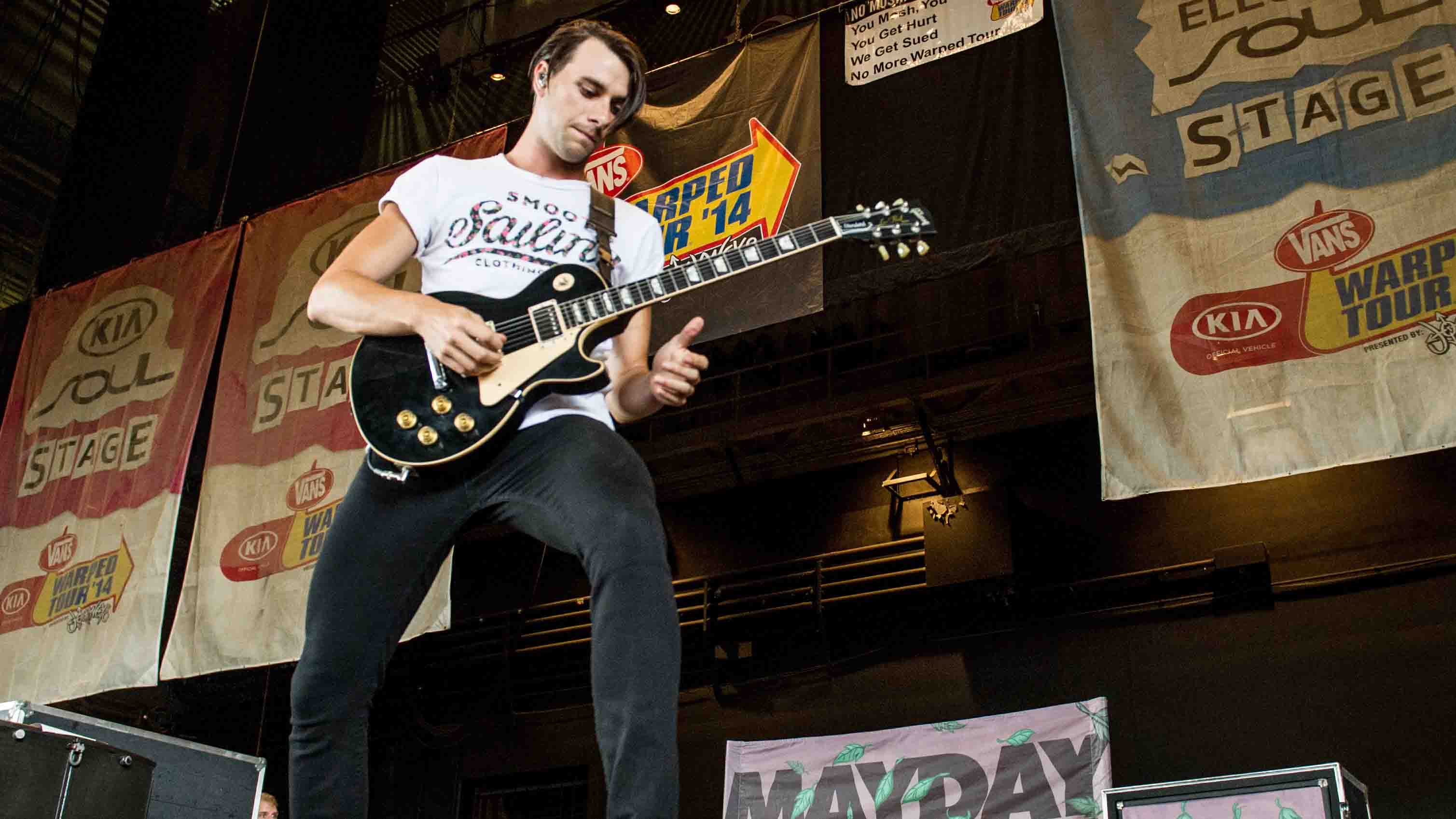Mayday Parade's Alex Garcia talks new album Black Lines
Guitarist on boutique pedals, songwriting and pushing the boundaries

Introduction
“It’s worked out well – I feel like everyone in this band has an ear for hooks,” nods Mayday Parade lead guitarist Alex Garcia. It’s hard not to believe him. In the decade since their formation, the Floridians have dented the mainstream charts on both sides of the Atlantic. Even a year in, they’d already become one of the hottest bands on Vans Warped Tour 2006, inking a deal with Fearless Records in the process. It was the kind of big break countless musicians dream of but few actually manage to achieve, and even fewer live up to.
With this year’s fifth full-length, Black Lines, Garcia and his bandmates wanted to avoid creature comforts and tread further away from the sound that spawned them. For self-preservation, more than anything else…
“Our attitudes were completely different this time round,” he admits. “We needed to change things up. It felt like the last two records we released were kinda the same, the songs were very similar in style. So Black Lines is the sound of us changing creatively and breaking out of that mould.
“It was that kind of mentality from the beginning: working with a different producer in a new location and really trying to seclude ourselves when writing and recording. We naturally wanted to stretch past the creative limitations we could hear in the previous records.”

The gear behind Black Lines
Recorded in a converted church studio and produced by Mike Sapone (Brand New, Taking Sunday), Black Lines invites more anthemic rock from the quintet, yet without straying too far from the energetic bounce of their pop-punk roots. And just as lead single Keep In Mind, Transmogrification Is A New Technology promised, Mayday Parade have plenty to offer in the way of boutique crunch tones from Garcia and rhythm guitarist Brooks Betts.
“Well, the easy bit with us is always the guitars,” confesses Garcia. “Brooks primarily used his Fender Telecaster, which has been on every record. I played a 1997 Les Paul that I bought about a year ago, as well as a Stratocaster at points.
"As for amps, we both used a Marshall JCM800 we found in the studio; it was a great-sounding amp. There were a couple of Fender amps, too: a Twin Reverb and a Champ that they had there.
“As far as effects… that’s a bit more difficult. We’d constantly go through pedals and switch them out – it’s hard to even remember how many we went through. One we used was the Supermoon Reverb made by Mr Black pedals; it’s a newer boutique that’s just been released – I absolutely love it.
"There was another called the Kilobyte made by Caroline, which is a delay pedal that made a lot of the ambient noises you hear on the record, tracks like Hollow and One Of Them Will Destroy The Other. That was how I managed to get all the crazy feedback. We were lucky; our producer Mike Sapone had a huge arsenal of fuzz and distortion pedals. He’s a bit of a madman when ripping them out and throwing new ones in, it’s constant trial and error, so for us it was a really fun environment to work in.”
That said, Garcia and Betts were keen to avoid sounding excessively busy and keep the guitars as organic as possible. Once the right pedal had been chosen, that was it, and they’d continue working from a minimalist perspective that created as much space as possible for their music to shine through. Backing off the gain and letting the guitars simply sing was more than enough. The music should speak for itself.
“We wanted to avoid cluttering the sound to make some huge wall of noise,” says the lead guitarist. “Because in the past we have done that! There’s been like 20 tracks of guitars on top of each other, which is just ridiculous. Especially with two guitarists and vocal melodies on top. You’re not really gaining anything; you almost lose more than you get by having so much going on.”
Having experimented with external songwriters in the past following major label pressure to sound more palatable for the mainstream, Garcia is keen to stress just how personal this record feels. Other than Real Friends singer Dan Lambton guesting on album opener One Of Them… Black Lines is a record conceived from beginning to end by the same five individuals.
“We did experiment with co-writers – well, experiment is the nicest way I can say that – on our second album, Anywhere But Here. What we’re really big on now is everything about the band being us. We wanted to become more internal. In the past, we’ve had other people write or perform on our albums, like a trumpet player or a choir. This had to come from and sound like Mayday Parade.”

Hit-writing parade
What we’ve grown to expect from Mayday Parade is attributed to one simple fact above all else: the Floridians have an ear for strong hooks. It’s that ability to write soaring melodies that build into sky-scraping choruses, perfectly engineered to become chart-bothering, bona-fide anthems.
Where Mayday Parade succeed, many have tried and failed, and if there was a secret, you’d probably already know it. Alex Garcia explains that while the art of songcraft may seem daunting at points, it really is as simple as what they say: work at it and then work even more.
“You’re not going to get any better unless you do it… so the best thing you can do is constantly practice and write. And it’s fun: you should enjoy doing it!
“Do as much as you can to expand your horizons – when I was a kid, I always wanted to sound like one band or another band, but that wasn’t expanding it into my own thing. If you’re able to process everything in your mind, jumble it all up and turn it into something that’s authentically you… that can only be a good thing. Take influence from music, art, movies or anything. It can all inspire you.
“But know your weaknesses,” offers the guitarist in closing. “One of the best things about learning and practising is getting to a point where you realise what you suck at, what you’re doing wrong. Then you can hone in on that. If you’re not aware of where you’re going wrong, you won’t know how to improve.
"I’ve gotten to a point where I can pinpoint what I’m bad at and figure out how to get better at it. And that goes for other things, too – this band started because we shared strong working ethics, touring everywhere, booking our own shows without anyone helping. Don’t rely on anyone else to help you get there; it doesn’t usually work.
"Some bands are lucky – they get a great manager or agent that can really push things along, but you’re better off understanding that side of the industry yourself. You can do it on your own terms, not at the mercy of anyone else.”
Black Lines is out 9 October via Fearless Records.
Amit has been writing for titles like Total Guitar, MusicRadar and Guitar World for over a decade and counts Richie Kotzen, Guthrie Govan and Jeff Beck among his primary influences. He's interviewed everyone from Ozzy Osbourne and Lemmy to Slash and Jimmy Page, and once even traded solos with a member of Slayer on a track released internationally. As a session guitarist, he's played alongside members of Judas Priest and Uriah Heep in London ensemble Metalworks, as well as handling lead guitars for legends like Glen Matlock (Sex Pistols, The Faces) and Stu Hamm (Steve Vai, Joe Satriani, G3).
